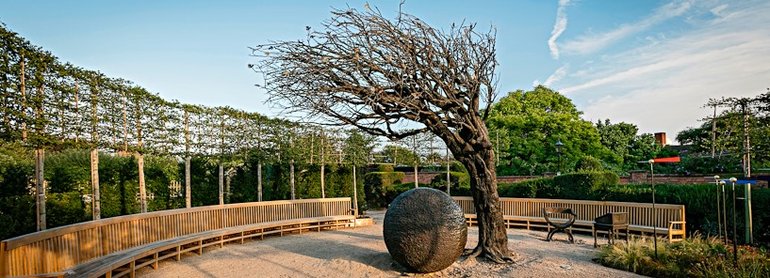
A Shakespeare Connected exhibition in collaboration with Alexandra Hewitt, University of Birmingham.
New Place was the house that William Shakespeare bought and lived in with his family from 1597 until 1616. Originally built in the 1480s as the impressive town house of Hugh Clopton, it was one the of the biggest properties in Stratford-upon-Avon. Shakespeare’s purchase of New Place reflects his wealth and status at this time. It also reveals the significant role his hometown and household played throughout his life.
New Place has an interesting but complicated history. The house Shakespeare lived in was taken down brick by brick in 1702 by the Clopton family, who built a more fashionable eighteenth-century house in its place. This later building was then demolished in 1759 by its final owner, Reverend Francis Gastrell. This proved to be very unpopular with people the world over, casting Gastrell as the villain in the New Place story. As a result of this demolition, the New Place site has stood vacant for over 250 years; a huge loss to Shakespeare fans worldwide.

Numerous attempts at imagining Shakespeare’s New Place have been made over the years. In the absence of a physical building a number of myths, misconceptions and even forgeries have emerged, contributing to the picture we have of New Place today. As a result, various images of New Place have appeared in a variety of forms - from souvenirs and even a monopoly board, to the current New Place Gardens owned and presented by The Shakespeare Birthplace Trust. Some images have been based on archaeological finds, but most have been created from the imaginations of those trying to deal with the loss of Shakespeare’s family home.

Recent activity surrounding New Place has largely focused on archaeology and architecture linked to the site. A series of excavations have taken place to unearth evidence of the house’s layout, architecture and household objects. From the evidence found we are able to build a more informed and accurate picture of the house Shakespeare occupied with his family. Yet, there remain many gaps in evidence and knowledge that may never be filled. From this absence, however, has emerged a range of artistic responses to Shakespeare’s lost home. When visiting the site today we take part in a long tradition of imagining Shakespeare’s New Place.

Click here to view some of the items and stories connected to New Place - see how people formed their own image of Shakespeare’s house. What would your version look like?
